Video Lesson: Proof by Induction with Matrices
How to do Proof by Induction with Matrices
To do proof of induction with matrices:
- Substitute n=1 into both sides of the equation to show that the base case is true.
- Substitute n = k into both sides of the equation and assume it is true to obtain Mk.
- Prove it is true for n=k+1 by writing Mk+1 as MMk and substituting the Mk from step 2.
- Conclude the proof by induction.
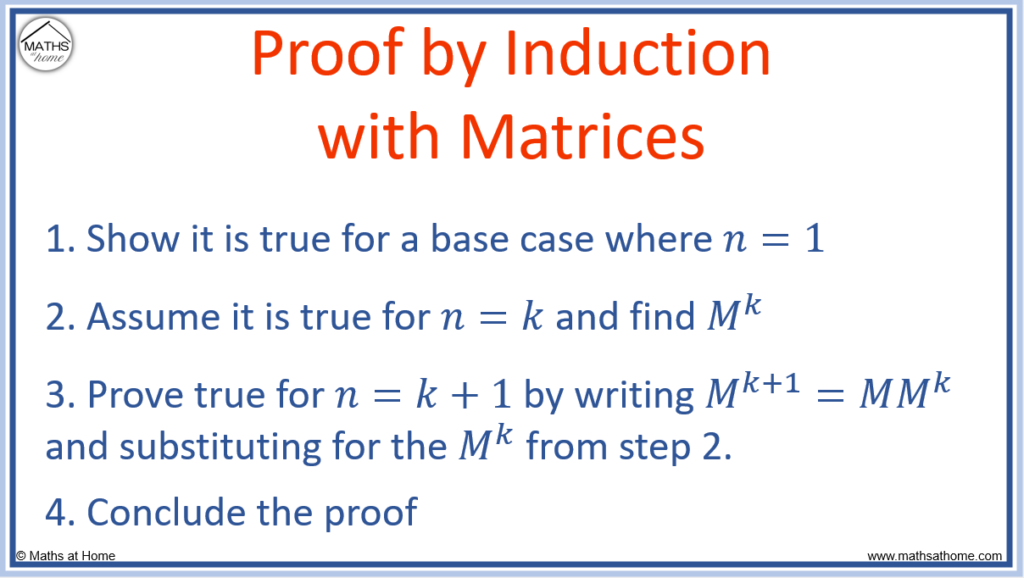
For example prove that using induction.
Step 1. Substitute n=1 into both sides of the equation to show that the base case is true
The goal of this first step is to show that both sides of the equation are equivalent for a given value. We choose a simple value such as n=1 and this is known as our base case.
When n=1, the left hand side of the equation becomes
which is just
.
When n=1, the right hand side of the equation becomes
which is just
.
We can see that substituting n=1 into both sides of the equals sign produces the same result.
Step 2. Substitute n = k into both sides of the equation and assume it is true to obtain Mk
In this step, it is assumed the result is true for when n=k.
n=k is substituted into to produce
.
No proof is required at this stage because it is assumed that this result is true. Therefore the left hand side of the equation is set equal to the right hand side.

Step 3. Prove it is true for n=k+1 by writing Mk+1 as MMk and substituting the Mk from step 2
Step 3 is the inductive step in which the algebraic proof is required to prove the n=k+1 case.
For proof by induction involving matrices, this requires the following steps:
- Write Mk+1 as MMk
- Substitute Mk for the assumption made in the n=k case
- Multiply the resulting matrices
- Simplify to obtain the desired result
It is first helpful to decide what outcome we wish to prove. That is, we substitute n=k+1 into both sides of the equals sign.
becomes
.
To prove this result, we use the steps listed in the list above.
- Write Mk+1 as MMk
The first step is to split Mk+1 into MMk.
That is, we write as the product of the two matrices
.
- Substitute Mk for the assumption made in the n=k case
From step 2, we assumed the result was true when n=k. That was, we assumed that.
Therefore can be written as
.
- Multiply the resulting matrices
Multiplying using the usual matrix multiplication procedure, we obtain:
- Simplify to obtain the desired result
We wish to show that this above matrix multiplication result leads us to our desired result of .
Evaluating the calculations inside the matrix multiplication, we obtain:
This can then simplify as:
We can write as
which is the desired result.
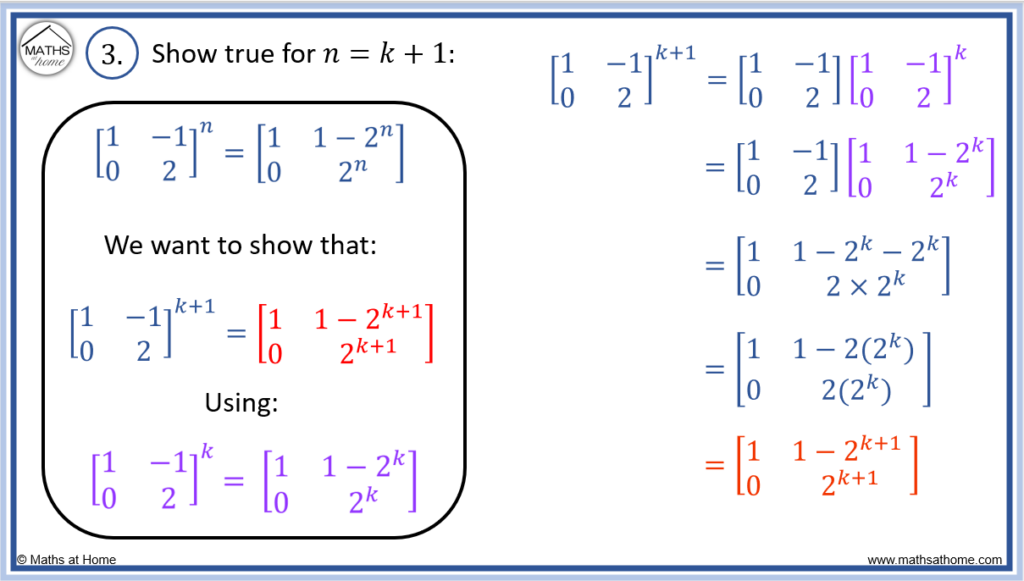
Step 4. Conclude the proof by induction
The result was proven true for the case where n=k+1 using the assumption that n=k is true.
This means that for every true result (n=k), the following result (n=k+1) must be true as well.
Since we showed that the first base case (n=1) was true, then the result is true for all positive integer values of n.
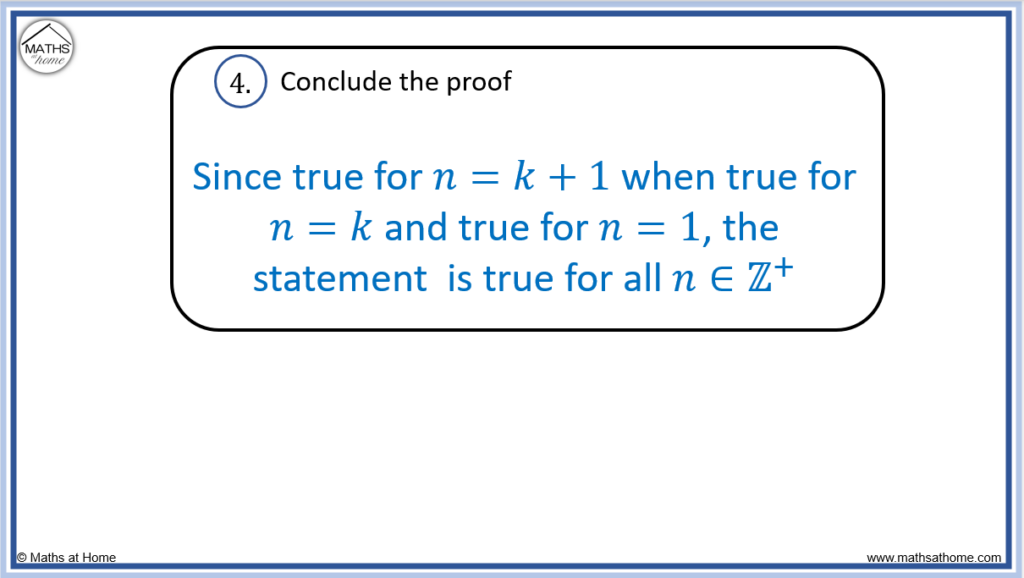
Proof by Induction Matrices Questions
Here are some examples of using proof by induction to prove results of matrices raised to powers.
Example 1. Prove that
Step 1 is to verify the n=1 case by substituting n=1 into both sides of the equation to obtain:
We can see that this result is true.
Step 2 is to assume that the result is true for n=k.
That is, we substitute n=k into both sides of the equation to obtain
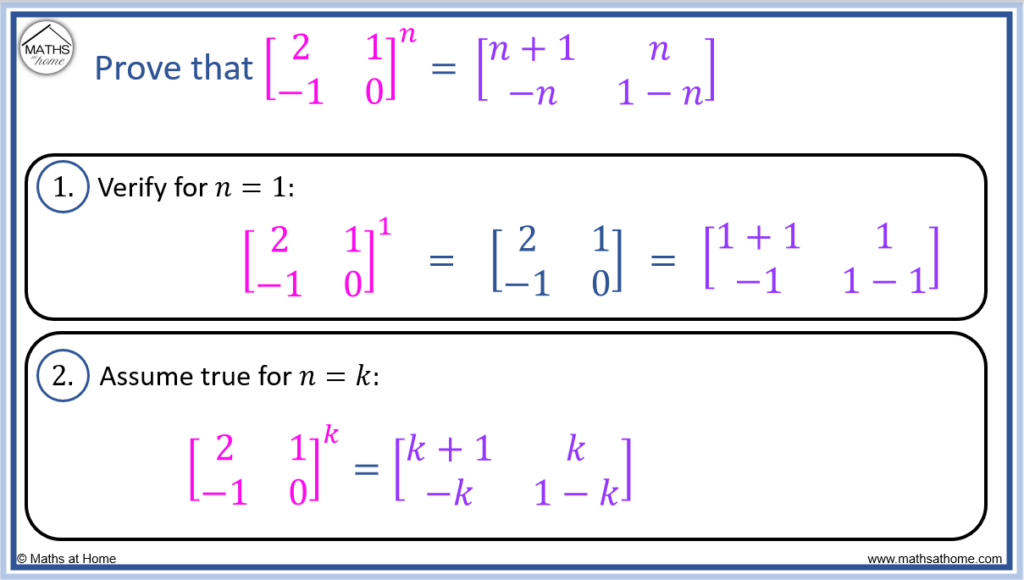
Step 3 is to show the result is true for n=k+1.
We wish to prove that the result obtained when n=k+1 is substituted in is true. That is .
This can be simplified as . This is the result we are aiming to prove.
We start by writing as
.
We then substitute our assumption from step 2, replacing with
so that:
becomes
.
We then multiply these two matrices out so that
Simplifying these calculations, we obtain:
which then becomes
which is the result we were trying to prove.
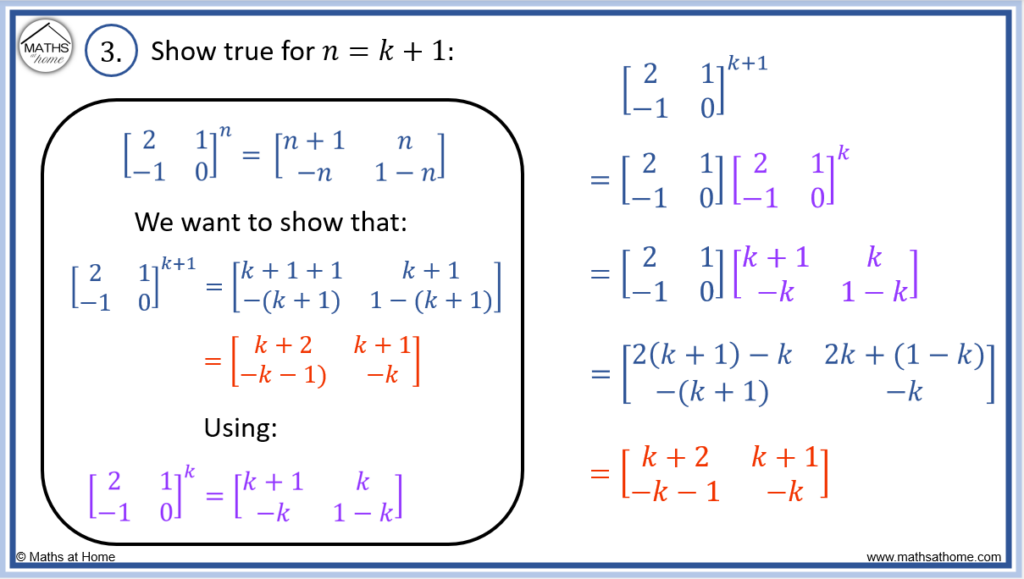
Step 4 requires us to conclude the proof by stating that since the statement is true for n=k+1 when true for n=k and true for n=1, the statement is true for all positive integers.

Example 2. Prove that
Step 1 is to verify the result for n=1.
We substitute n=1 on the left hand side of the equation to obtain which is the same as
.
Substituting n=1 on the right hand side, we obtain . Evaluating this, we have
.
Step 2 is to assume the result is true for n=k.
We substitute n=k into both sides of the equals sign so that becomes
.
We assume this result is true.
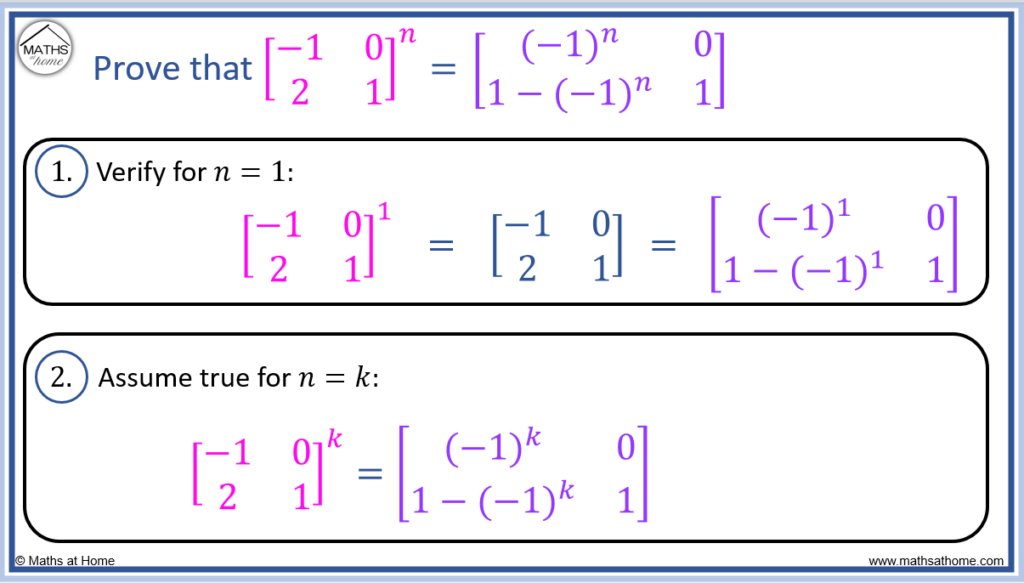
Step 3 is to prove the result is true for n=k+1.
We substitute n=k+1 into both sides to see what we are hoping to prove. That is: .
We then start with the left hand side of the equation and write as
.
We then use our assumption from step 2 that to write
as
.
We then multiply out these two matrices to obtain
Simplifying the calculations, we obtain .
Since and
, this simplifies further to:
.
Now is the same as
which is the same as
.
Therefore we can finish the proof by writing the matrix as .

Step 4 is our conclusion of the proof, stating that since the statement is true for n=k+1 when true for n=k and the base case of n=1 is true, then the statement is true for all positive integer values of n.

